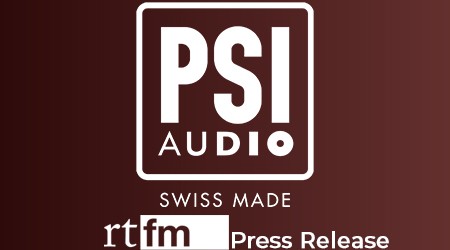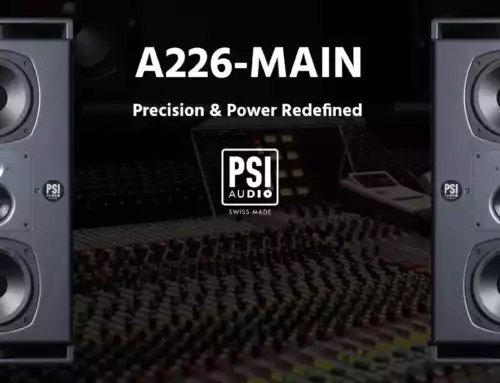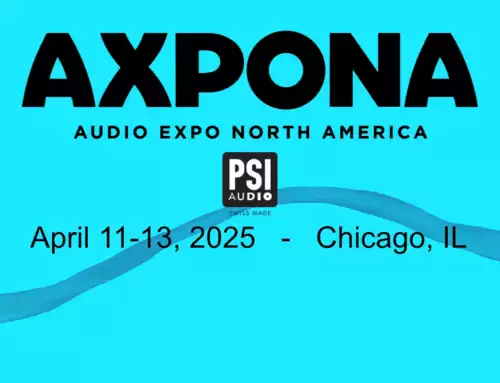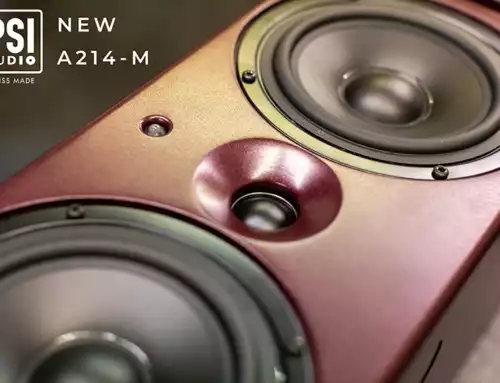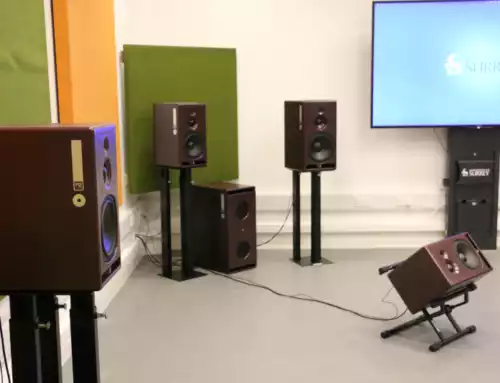Bob Katz, one of the best-known mastering engineers, uses the active bass traps AVAA C20 by PSI Audio to perfect his mastering room acoustics. The author of the most comprehensive book on audio mastering expresses his amazement with the innovative system from Switzerland, calling it a miracle and wondering how it can defy the laws of physics. The Active Velocity Acoustic Absorber can eliminate room modes from 15 Hz to 150 Hz more efficiently than conventional absorbers five to twenty times the size – without the risk of overdamping the room. The AVAA C20 also does not need to be tuned to any specific frequency, as Katz explains: “If there is a problem at one frequency or another, it will take care of it transparently. It doesn’t add any colouration, it just takes care of it.” This makes the PSI Audio AVAA C20 a perfect solution for audio professionals of all disciplines who seek to treat problems in the bass spectrum of their rooms.
The contents of this press release
- Bob Katz uses PSI Audio AVAA C20
- Mastering engineer Bob Katz
- Active bass trap AVAA C20
- Perfect acoustics for perfect sound
- Bob Katz and the AVAA
- Portable room acoustics
- Mastering for a new generation of audiophiles
- PSI Audio AVAA C20: price and availability
Yverdon-les-Bains, 7th February 2018 – With the introduction of the active bass trap AVAA C20, Swiss manufacturer PSI Audio revolutionized professional room acoustics. Producers and engineers all over the world integrated the AVAA system into their listening environments. One of the most illustrious among the AVAA users is mastering engineer Bob Katz, who employs three C20 units to perfect the acoustics in his Florida-based studio.
Mastering Engineer Bob Katz
Inventor of an advanced metering system, author of quite possibly THE standard textbook on audio mastering and, of course, one of the most experienced and widely respected mastering engineers in the world – when your household happens to be a studio, then Bob Katz is most certainly a household name. When asked about his approach to mastering, Katz responds: “Do no harm, and pay attention to the intent of the artist.” That does not necessarily mean to go soft on the material, though. “Mastering can also be very aggressive. If that’s the intent and feeling of the music, then I’m going to work hard to make sure we keep that feeling, and possibly improve it.”
The song material also determines the use of analogue or digital signal processors. “If a recording requires an extremely transparent approach, I might use all digital gear. But if a recording is lacking in tone or needs some warmth, I can more often achieve best results with some of my analogue processors, be it tube or solid state, or a combination of the two.” Aggressive or soft, analogue or digital – Katz’s key to a good sounding record is the use of microdynamics. “And in order to be able to make a judgment, I need to have the finest acoustics.”
Active bass trap AVAA C20
In order to achieve the acoustic response he is aiming for, Bob Katz combined conventional absorption with the revolutionary AVAA system from PSI Audio. The “Active Velocity Acoustic Absorber” affects the acoustic impedance of the surrounding air, sucking out the low frequencies – almost as if there was a hole in the wall. A microphone measures the acoustic pressure, the information is processed and a transducer membrane is driven to neutralize the sound waves, thus eliminating room modes more efficiently than a traditional absorber umpteen times the size. Treating the frequency range between 15 and 150 Hz, the AVAA C20 can take care of most modal resonances – without affecting the direct sound of the monitors, as EQ solutions would. The impressive effect the PSI Audio AVAA C20 can have on the acoustics of a room can even go beyond its nominal frequency range, as eliminated bass frequencies will not mask higher frequencies, and the reduction of reflected sound also increases the clarity of sonic space.
Perfect acoustics for perfect sound
A mastering engineer’s most important tools are their ears. For these sensitive tools to work properly, an acoustically impeccable listening environment is paramount. Even the best speaker sets can only get you so far when your room spoils the all important neutrality of the playback. Katz explains the importance of a neutral and linear listening environment with the graphic aid of a bell curve. “When the loudspeakers in your room fall right in the middle of the curve between the bassiest, thumpiest, ugliest sounding speakers you have ever heard on the one side, and the brightest, harshest, thinnest system you have ever heard on the other side, then you are going to be able to translate from your mastering room to the widest variety. That is why you want the best and most accurate acoustics to make your judgments – it will translate to the widest variety of listeners.”
Getting your room to sound perfect is not an easy task though. Traditional trapping tends to overattenuate the upper mids and higher frequencies, while bass frequencies are very hard to treat with classic absorbers. But a mastering engineer’s room needs to be consistent over frequency and time: From the lowest bass to the crispest highs, every part of the spectrum should be equally prominent in the room. “You need a reasonably large room which has been treated to produce an even Schroeder curve,” Katz explains, “meaning that the reverberation with respect to frequency is even throughout the octaves.” This is exactly what the PSI Audio AVAA C20 can help with.
Bob Katz and the AVAA
“I had tried some electronic bass traps before,” Katz states, and quickly adds the disadvantages of the systems he had tried: The “unwieldy design”, the restriction to two resonant frequencies, the complexity of setting up and tuning the system and its tendency to produce high frequency feedback and distortion. But the PSI Audio AVAA C20 is different. “My jaw dropped,” Katz describes his first encounter with the Swiss bass trap. “The AVAA responds to pressure changes at any frequency from 15 Hz to 150 Hz, so if there is a problem at one frequency or another, it will take care of it transparently. It doesn’t add any colouration, it doesn’t distort, it just takes care of it.” This also means that the system does not draw any attention sonically, it remains inaudible in the best sense of the word. “When you turn the AVAAs on, there is an eerie silence and suddenly your focus is on the sound coming from the main speakers.”
Portable room acoustics
The PSI Audio AVAA C20 has one feature not commonly asked for in acoustic elements: portability. And yet, this feature can make an engineer’s life a lot easier, as Katz explains. “A year after I got the AVAAs, I changed my loudspeaker system from one brand to another, and the new speakers are located about one foot further away from me than the previous loudspeakers. I also moved the subwoofers, to work in tandem with the new mains position, so the entire low frequency resonance points, the modal character of my room changed.” Instead of bass resonances in the corners, Katz now had tangential modes building up between front and rear wall. While conventional acoustic elements would have been attached to the walls and quite hard or even impossible to move, the PSI Audio system made adjusting the acoustics easy. “I was able to pick up the AVAA traps, move them out of the corners and distribute them across the back wall instead. It almost seems to defy the laws of physics: How can something that small and lightweight deal with 20 Hz frequencies?”
Mastering for a new generation of audiophiles
Bob Katz cannot stress enough the importance of finely tuned acoustics for perfect masters: “People might wonder why we put in so much effort when the result is only going to be listened to on a cheap stereo system or a pair of headphones connected to a smartphone. The answer is that the better the master I can make, the better it will sound on any piece of gear.” And that is not all, as Katz observes a positive trend in the reception of music. “It is kind of a miracle that you can play back 96 kHz and 192 kHz files via the internet,” the mastering expert rejoices. “No more MP3s, no more low resolution stuff – because MQA [Master Quality Authenticated, a digital high quality audio codec] is allowing us to do that.” Katz hopes for a new generation of audiophiles, growing up with high resolution audio streaming, and by extension a growing demand for high quality masters. With his years of experience, his finely tuned ears and a mastering room sweetened by three PSI Audio AVAA C20s, Bob Katz stands at the ready to shape the future of audio.

